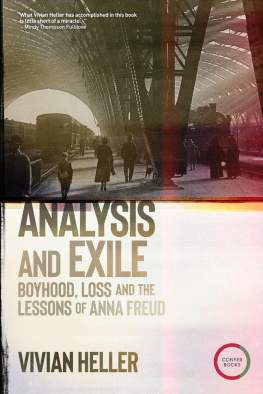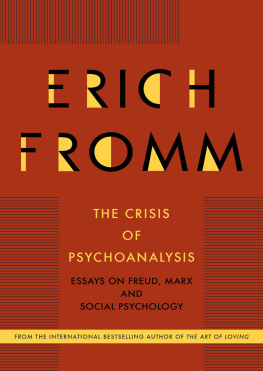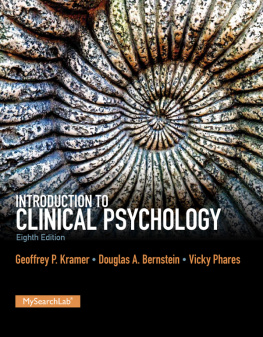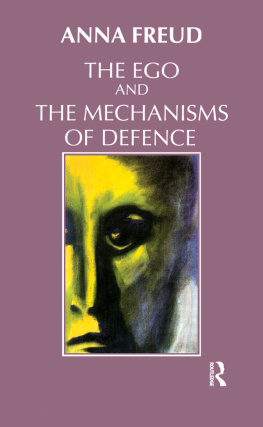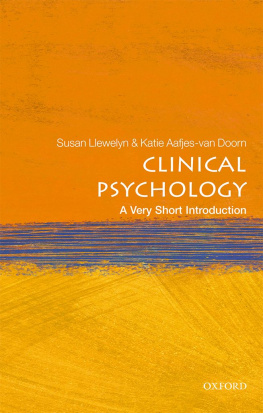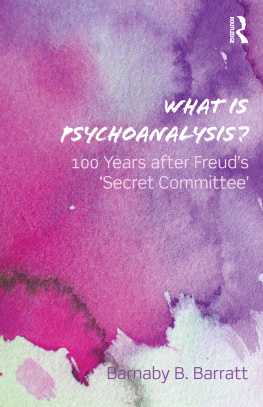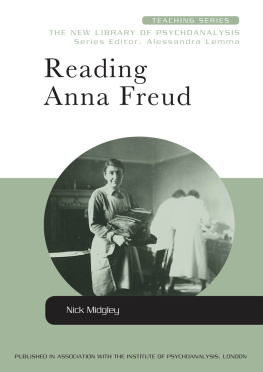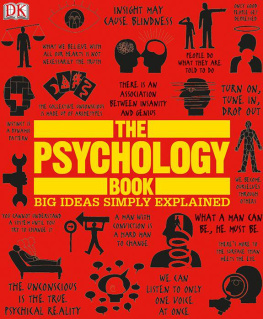Anna Freud - The Ego and the Mechanisms of Defence
Here you can read online Anna Freud - The Ego and the Mechanisms of Defence full text of the book (entire story) in english for free. Download pdf and epub, get meaning, cover and reviews about this ebook. year: 1992, publisher: Karnac Books, genre: Religion. Description of the work, (preface) as well as reviews are available. Best literature library LitArk.com created for fans of good reading and offers a wide selection of genres:
Romance novel
Science fiction
Adventure
Detective
Science
History
Home and family
Prose
Art
Politics
Computer
Non-fiction
Religion
Business
Children
Humor
Choose a favorite category and find really read worthwhile books. Enjoy immersion in the world of imagination, feel the emotions of the characters or learn something new for yourself, make an fascinating discovery.

- Book:The Ego and the Mechanisms of Defence
- Author:
- Publisher:Karnac Books
- Genre:
- Year:1992
- Rating:3 / 5
- Favourites:Add to favourites
- Your mark:
- 60
- 1
- 2
- 3
- 4
- 5
The Ego and the Mechanisms of Defence: summary, description and annotation
We offer to read an annotation, description, summary or preface (depends on what the author of the book "The Ego and the Mechanisms of Defence" wrote himself). If you haven't found the necessary information about the book — write in the comments, we will try to find it.
The Ego and the Mechanisms of Defence — read online for free the complete book (whole text) full work
Below is the text of the book, divided by pages. System saving the place of the last page read, allows you to conveniently read the book "The Ego and the Mechanisms of Defence" online for free, without having to search again every time where you left off. Put a bookmark, and you can go to the page where you finished reading at any time.
Font size:
Interval:
Bookmark:
All rights reserved. No part of this publication may be reproduced, stored in a retrieval system, or transmitted in any form, or by any means, electronic, mechanical, photocopying, recording or otherwise, without the prior permission of
The Hogarth Press.
This book was originally published in German in 1936. The English translation by Cecil Baines was published in 1937 and reprinted in 1942, 1947, 1954, I960 and, with a new Foreword, in 1966. The present revised edition, based on the 1937 translation, was first published in the United States in 1966, and in this country in 1968 by the Hogarth Press Ltd., reprinted 1972, 1976, 1979, 1986. Reprinted with their permission by Karnac Books, 1993,
British Library Cataloguing in Publication Data. A catalogue record for this book is available from the British Library.
ISBN 1 85575 038 4
E XECUTORS OF THE ESTATE OF A NNA F REUD 1937, 1966
Printed in Great Britain by Poleslnr Whcatons Ltd, Exeter
As indicated in the title, this book deals exclusively with one particular problem, i.e., with the ways and means by which the ego wards off unpleasure and anxiety, and exercises control over impulsive behavior, affects, and instinctive urges.
To investigate an activity of the ego in this painstaking manner, and to treat it on a par with the processes in the unconscious id was a comparatively novel venture at the original date of publication. Much has changed in this respect in the thirty years which have elapsed since then until, by now, the ego as a psychic structure has become a legitimate object of psychoanalytic study. If, in 1936, it was sufficient to enumerate and illustrate ego mechanisms, to inquire into their chronology, and to assess the role of the defense organization as a whole for the maintenance of health or illness, this can no longer be done today without relating the egos defensive achievements to its other aspects, i.e., to its primary deficiencies, its apparatuses and functions, its autonomies, etc.
It proved not feasible to incorporate such issues into the Mechanisms of Defense without carrying out large-scale revisions and without incidentally destroying the unity and present circumscribed usefulness of the book. For this reason it was decided to leave the original text intact, and to relegate more recent thinking to a further volume in which the aspects of Normality and Pathology in Childhood are pursued, especially with regard to their developmental and diagnostic implications.
A NNA F REUD , LL.D., Sc.D.
London, February 1966
TRANSLATORS NOTE
I wish to express my gratitude to Dr. Ernest Jones and Mr. James Strachey for many helpful suggestions.
C.M.B.
Part I
THEORY OF THE MECHANISMS OF DEFENSE
There have been periods in the development of psychoanalytic science when the theoretical study of the individual ego was distinctly unpopular. Somehow or other, many analysts had conceived the idea that, in analysis, the value of the scientific and therapeutic work was in direct proportion to the depth of the psychic strata upon which attention was focused. Whenever interest was shifted from the deeper to the more superficial psychic stratawhenever, that is to say, research was deflected from the id to the egoit was felt that here was a beginning of apostasy from psychoanalysis as a whole. The view held was that the term psychoanalysis should be reserved for the new discoveries relating to the unconscious psychic life, i.e., the study of repressed instinctual impulses, affects, and fantasies. With problems such as that of the adjustment of children or adults to the outside world, with concepts of value such as those of health and disease, virtue or vice, psychoanalysis was not properly concerned. It should confine its investigations exclusively to infantile fantasies carried on into adult life, imaginary gratifications, and the punishments apprehended in retribution for these.
Such a definition of psychoanalysis was not infrequently met with in analytic writings and was perhaps warranted by the current usage, which has always treated psychoanalysis and depth psychology as synonymous terms. Moreover, there was some justification for it in the past, for it may be said that from the earliest years of our science its theory, built up as it was on an empirical basis, was pre-eminently a psychology of the unconscious or, as we should say today, of the id. But the definition immediately loses all claim to accuracy when we apply it to psychoanalytic therapy. From the beginning analysis, as a therapeutic method, was concerned with the ego and its aberrations: the investigation of the id and of its mode of operation was always only a means to an end. And the end was invariably the same: the correction of these abnormalities and the restoration of the ego to its integrity.
When the writings of Freud, beginning with Group Psychology and the Analysis of the Ego (1921) and Beyond the Pleasure Principle (1920), took a fresh direction, the odium of analytic unorthodoxy no longer attached to the study of the ego and interest was definitely focused on the ego institutions. Since then the term depth psychology certainly does not cover the whole field of psychoanalytic research. At the present time we should probably define the task of analysis as follows: to acquire the fullest possible knowledge of all the three institutions of which we believe the psychic personality to be constituted and to learn what are their relations to one another and to the outside world. That is to say: in relation to the ego, to explore its contents, its boundaries, and its functions, and to trace the history of its dependence on the outside world, the id, and the superego; and, in relation to the id, to give an account of the instincts, i.e., of the id contents, and to follow them through the transformations which they undergo.
We all know that the three psychic institutions vary greatly in their accessibility to observation. Our knowledge of the idwhich was formerly called the system Uc$.can be acquired only through the derivatives which make their way into the systems Pes. and Cs. If within the id a state of calm and satisfaction prevails, so that there is no occasion for any instinctual impulse to invade the ego in search of gratification and there to produce feelings of tension and unpleasure, we can learn nothing of the id contents. It follows, at least theoretically, that the id is not under all conditions open to observation.
The situation is, of course, different in the case of the superego. Its contents are for the most part conscious and so can be directly arrived at by endopsychic perception. Nevertheless, our picture of the superego always tends to become hazy when harmonious relations exist between it and the ego. We then say that the two coincide, i.e., at such moments the superego is not perceptible as a separate institution either to the subject himself or to an outside observer. Its outlines become clear only when it confronts the ego with hostility or at least with criticism. The superego, like the id, becomes perceptible in the state which it produces within the ego: for instance, when its criticism evokes a sense of guilt.
Now this means that the proper field for our observation is always the ego. It is, so to speak, the medium through which we try to get a picture of the other two institutions.
When the relations between the two neighboring powers ego and idare peaceful, the former fulfills to admiration its role of observing the latter. Different instinctual impulses are perpetually forcing their way from the id into the ego, where they gain access to the motor apparatus, by means of which they obtain gratification. In favorable cases the ego does not object to the intruder but puts its own energies at the others disposal and confines itself to perceiving; it notes the onset of the instinctual impulse, the heightening of tension and the feelings of unpleasure by which this is accompanied and, finally, the relief from tension when gratification is experienced. Observation of the whole process gives us a clear and undistorted picture of the instinctual impulse concerned, the quantity of libido with which it is cathected, and the aim which it pursues. The ego, if it assents to the impulse, does not enter into the picture at all.
Font size:
Interval:
Bookmark:
Similar books «The Ego and the Mechanisms of Defence»
Look at similar books to The Ego and the Mechanisms of Defence. We have selected literature similar in name and meaning in the hope of providing readers with more options to find new, interesting, not yet read works.
Discussion, reviews of the book The Ego and the Mechanisms of Defence and just readers' own opinions. Leave your comments, write what you think about the work, its meaning or the main characters. Specify what exactly you liked and what you didn't like, and why you think so.

